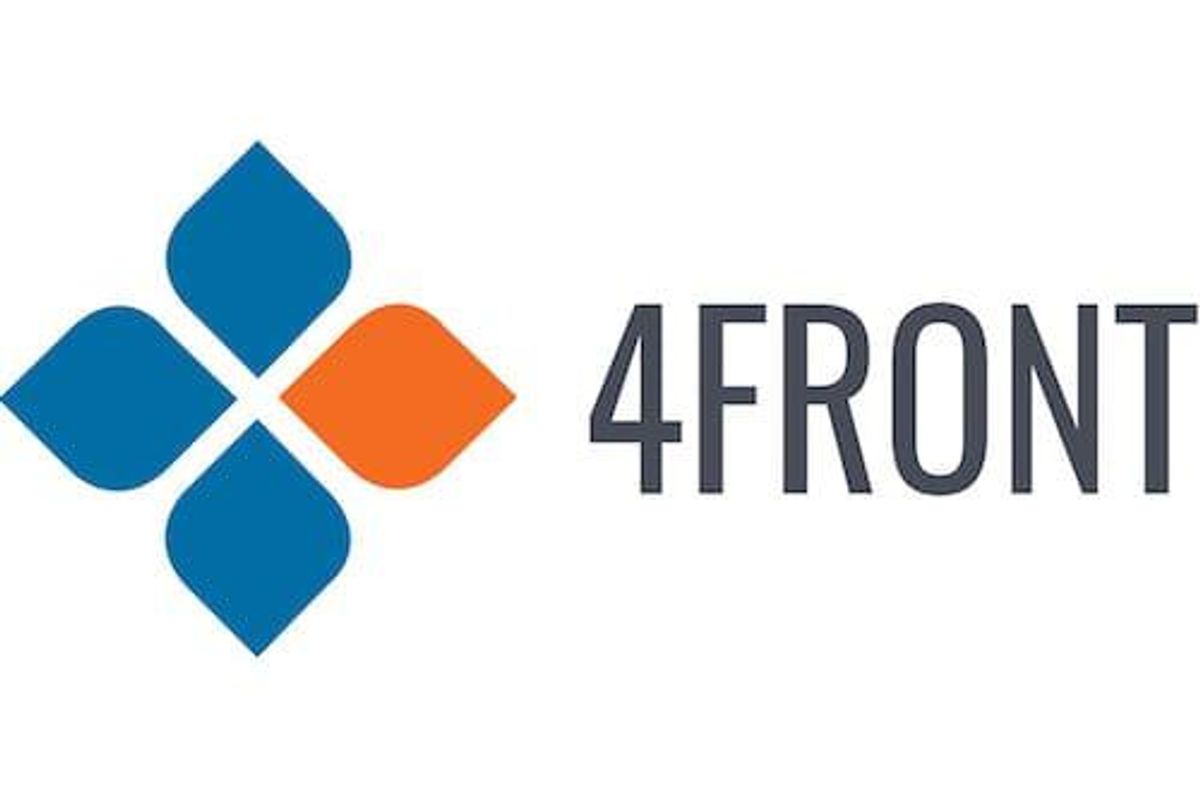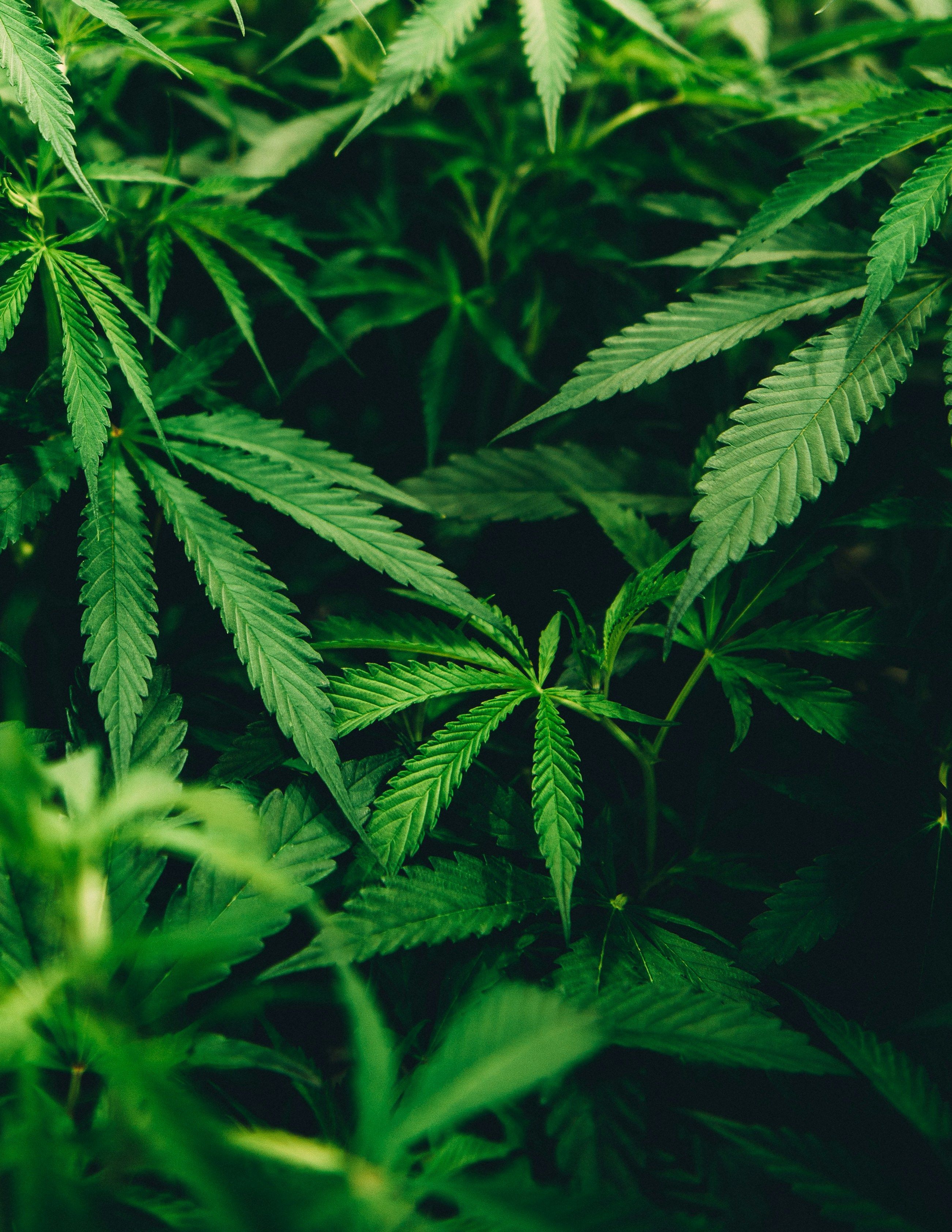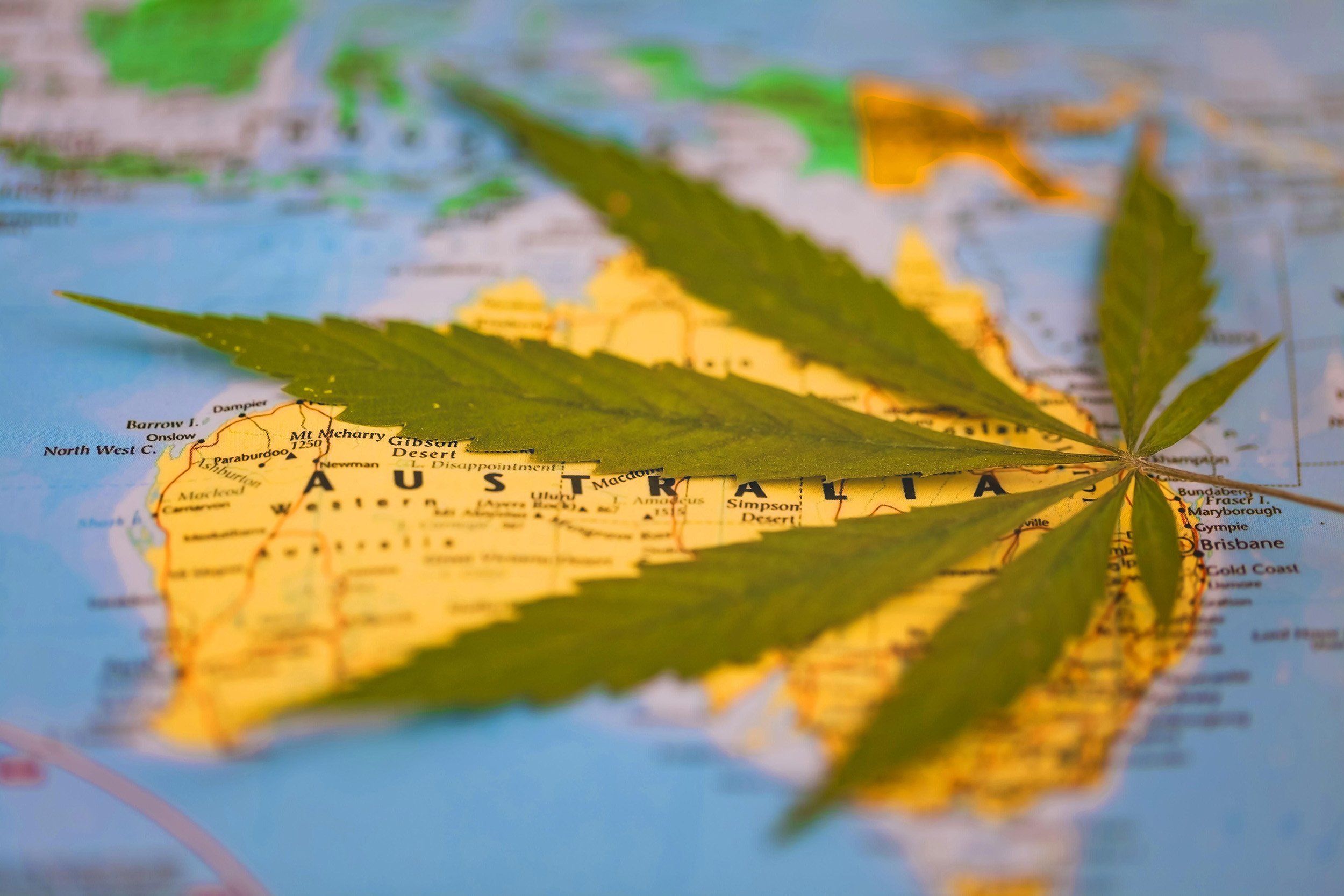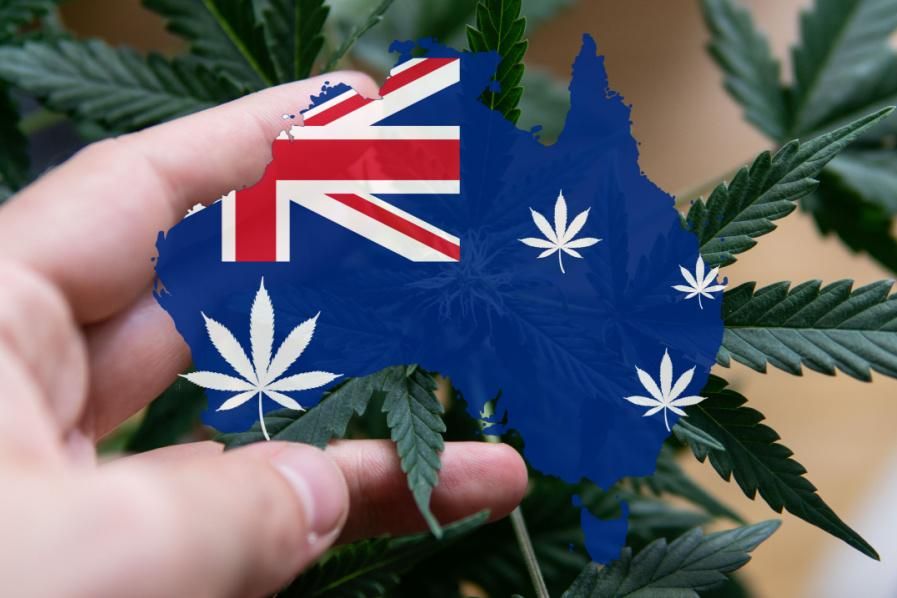
Q1 2021 Systemwide Pro Forma Revenue of $31.4 million , an increase of 26% over Q4 2020
Q1 2021 Adjusted EBITDA of $5.9 million , representing an Adjusted EBITDA Margin of 19%
Reiterated FY2021 guidance for Systemwide Pro Forma Revenue of $170 -180 million and Adjusted EBITDA of $40 -50 million
The Company's existing licensed projects at maturity represent a long-term revenue and EBITDA opportunity upwards of $650 million and $250 million , respectively
Conference call to be held today, May 24, 2021 at 5:00 p.m. ET
PHOENIX, Ariz. , May 24, 2021 /PRNewswire/ - 4Front Ventures Corp. (CSE: FFNT) (OTCQX: FFNTF) ("4Front" or the "Company"), a vertically integrated, multi-state cannabis operator and retailer, today announced its financial results for the first quarter ended March 31, 2021 . All financial information is presented in U.S. dollars unless otherwise indicated.
First Quarter 2021 ("Q1 2021") Financial Results Highlights
- Systemwide Pro Forma Revenue was $31.4 million
- GAAP-reported revenue was $23.0 million
- Adjusted EBITDA was $5.9 million
Operational Highlights
- Strong performance in sales and product adoption across retail locations, exceeding all internal projections; positive momentum continues in Q2
- California
- Company's state-of-the-art 170,000 square foot production facility in Commerce, California is on track for planned Q2 2021 opening
- Certificate of Occupancy anticipated in the next ten days
- Signed distribution agreement with Nabis, a leading wholesale cannabis distributor to more than 750 stores in California
- Massachusetts
- The Company received its Certificate of Occupancy and approval to operate from the Town of Brookline for its third adult-use dispensary in Massachusetts
- Grand opening in June 2021 pending final approval from the Cannabis Control Commission
- Illinois
- Secured land and funding for new cultivation and production facility in Illinois ; groundbreaking scheduled to occur in Q3 2021
Management Commentary
"Our strategy of replicating low-cost production methods in new markets began to take shape and grow at scale in Massachusetts , Illinois and California in our first quarter, extending the momentum we created in 2020," said Leo Gontmakher , Chief Executive Officer of 4Front. "Utilizing the cultivation and production techniques developed for our facilities in Washington , we have increased the yields and quality of our products produced in both Illinois and Massachusetts , which has enabled us to supply our adult use dispensaries to meet the ever-increasing demand in those markets. As production increases, we plan to begin selling excess product into the wholesale market as well."
Mr. Gontmakher added, "Continued positive momentum following the initiation of adult use sales in late 2020 in both Georgetown and Worcester, Massachusetts , along with an exceptionally strong launch of our Calumet City, Illinois dispensary in December, contributed to our robust sequential Q1 sales increases and exceeded all internal expectations. Looking ahead, with the completion and opening of our manufacturing facility in Commerce, California just a few weeks out, we expect to be in the market imminently with our suite of high-quality, branded products. As the largest legal cannabis market in the world, California offers a unique opportunity to build efficient operations and create incredible products that are replicable across our nationwide footprint."
Mr. Gontmakher concluded, "With revenue-generating operations now in California , Illinois , Massachusetts , Michigan , and Washington , we are poised to further scale the business according to our expansion strategy for 2021. We continue to track towards our stated financial guidance for the year, anticipating $170 - $180 million in Pro Forma Systemwide Revenue and $40 - $50 million in Adjusted EBITDA."
Business Updates and Developments
Systemwide pro forma revenue increased 26% to $31.4 million in Q1 2021, compared to $25.0 million in Q4 2020. Retail sales and product adoption exceeded internal expectations. This increase was primarily due to higher sales from the two Massachusetts dispensaries following the start of adult use sales in the second half of 2020, and a very strong launch from the Calumet City dispensary that opened in December 2020 .
Q1 2021 Adjusted EBITDA was $5.9 million , steady with Q4 2020 representing an adjusted EBITDA margin of 19%. EBITDA margin in the quarter was negatively impacted by the ramp up of the Company's expanded grow facility in Illinois . While the tripling of the Company's Illinois cultivation facility's flowering canopy was completed on time and under budget, the first harvest from the expanded facility was not completed until April, leading to a one-time, higher than expected average cost per gram for manufactured products in Q1 2021. Through the first month of Q2, 4Front has more than tripled its Illinois harvest output and expects a meaningful rebound in margins in Q2.
The Company's fully-funded, state-of-the-art 170,000 square foot manufacturing facility in Commerce, California is nearing completion and remains on track to be ready to serve the California cannabis market beginning in Q2 2021. The Company's first suite of products will include edibles, tinctures, capsules and infused pre-rolls, including Marmas™, Pebbles™, Chewees™, Hi-Burst™, Verdure™ and Terp Stix™. The Company has signed a distribution agreement with Nabis, a leading distributor of cannabis products. Nabis distributes brands to more than 750 dispensaries in California , covering 99% of licensed retailers in the state.
Construction of the Company's third Massachusetts Mission Dispensary in Brookline is complete. The Company also announced that it has cleared all municipal processes with the City of Brookline including receiving its Certificate of Occupancy. Pending final approval from the Cannabis Control Commission, the grand opening is slated for June 2021 .
In Illinois , the recently announced development of our new cultivation and production facility continues as scheduled with construction beginning in Q3 2021. The first phase, a 258,000 square foot building with 65,000 square feet of flowering canopy and approximately 70,000 square feet of manufacturing space is on track to break ground in Q3 2021.
Conference Call
The Company will host a conference call and webcast on Monday, May 24, 2021 at 5:00 p.m. ET to review its operational and financial results and provide an update on current business trends.
To join the call, dial 1-877-407-0792 toll free from the United States or Canada or 1-201-689-8263 if dialing from outside those countries. The webcast can be accessed at this link .
The call will be available for replay until Monday, May 31, 2021 . To access the telephone replay, dial 1-844-512-2921 toll free from the United States and Canada , or 1-412-317-6671 if dialing from outside those countries, and use this replay pin number: 13719936.
About 4Front Ventures Corp.
4Front (CSE: FFNT) (OTCQX: FFNTF) is a national multi-state cannabis operator and retailer, with a market advantage in mass-produced, low-cost quality branded cannabis products. 4Front manufactures and distributes a portfolio of over 21 cannabis brands including Marmas, Crystal Clear , Funky Monkey, Pebbles, and the Pure Ratios wellness collection, distributed through retail outlets and their chain of strategically positioned Mission branded dispensaries. Headquartered in Phoenix, Arizona , 4Front has operations in Illinois , Massachusetts , California , Michigan , and Washington state . From plant genetics to the cannabis retail experience, 4Front's team applies expertise across the entire cannabis value chain. For more information, visit www.4frontventures.com .
Financial Statements
4Front Ventures Corp.
Formerly 4Front Holdings, LLC
Consolidated Balance Sheets
As of March 31, 2021 and December 31, 2020
| | March 31, | | December 31, | ||
| ASSETS | |||||
| Current assets: | | | | ||
| Cash | $ | 17,806 | | $ | 18,932 |
| Accounts receivable | 390 | | 437 | ||
| Other receivables | 195 | | 1,341 | ||
| Current portion of lease receivables | 3,495 | | 3,450 | ||
| Inventory | 18,971 | | 18,037 | ||
| Current portion of notes receivable | 292 | | 264 | ||
| Prepaid expenses | 3,105 | | 2,275 | ||
| Total current assets | 44,254 | | 44,736 | ||
| Property and equipment, net | 39,542 | | 33,618 | ||
| Notes receivable and accrued interest | — | | 91 | ||
| Lease receivables | 7,486 | | 7,595 | ||
| Intangible assets, net | 28,207 | | 28,790 | ||
| Goodwill | 23,155 | | 23,155 | ||
| Right-of-use assets | 61,593 | | 62,466 | ||
| Deposits | 4,685 | | 4,305 | ||
| TOTAL ASSETS | $ | 208,922 | | $ | 204,756 |
| | | | | ||
| LIABILITIES AND SHAREHOLDERS' EQUITY | |||||
| LIABILITIES | | | | ||
| Current liabilities: | | | | ||
| Accounts payable | $ | 6,576 | | $ | 4,722 |
| Accrued expenses and other current liabilities | 8,213 | | 6,427 | ||
| Taxes payable | 13,308 | | 11,502 | ||
| Derivative liability | 8,339 | | 5,807 | ||
| Current portion of convertible notes | 2,160 | | 1,652 | ||
| Current portion of lease liability | 1,795 | | 1,909 | ||
| Current portion of contingent consideration payable | — | | 2,393 | ||
| Current portion of notes payable and accrued interest | 3,852 | | 3,372 | ||
| Total current liabilities | 44,243 | | 37,784 | ||
| Convertible notes | 11,466 | | 14,722 | ||
| Notes payable and accrued interest from related party | 45,704 | | 45,362 | ||
| Long term notes payable | 1,838 | | 1,907 | ||
| Long term accounts payable | 1,600 | | 1,600 | ||
| Contingent consideration payable | 3,212 | | 3,103 | ||
| Deferred tax liability | 7,162 | | 6,530 | ||
| Lease liability | 51,334 | | 51,545 | ||
| TOTAL LIABILITIES | 166,559 | | 162,553 | ||
| SHAREHOLDERS' EQUITY (DEFICIENCY) | | | | ||
| Equity attributable to 4Front Ventures Corp. | 259,431 | | 250,583 | ||
| Additional paid-in capital | 44,512 | | 42,116 | ||
| Deficit | (261,637) | | (250,548) | ||
| Total 4Front Ventures Corp. shareholders' equity | 42,306 | | 42,151 | ||
| Non-controlling interest | 57 | | 52 | ||
| TOTAL SHAREHOLDERS' EQUITY | 42,363 | | 42,203 | ||
| TOTAL LIABILITIES AND SHAREHOLDERS' EQUITY | $ | 208,922 | | $ | 204,756 |
4Front Ventures Corp.
Formerly 4Front Holdings, LLC
Consolidated Statements of Operations and Comprehensive Loss
For the Three Months Ended March 31, 2021 and March 31, 2020
| | Three Months Ended March 31, | ||||
| | 2021 | | 2020 | ||
| REVENUE | | | | ||
| Revenue from sale of goods | $ | 20,080 | | $ | 9,755 |
| Real estate income | 2,890 | | 2,897 | ||
| Total revenues | 22,970 | | 12,652 | ||
| Cost of goods sold, sale of grown and manufactured products | (5,335) | | (2,815) | ||
| Cost of goods sold, sale of purchased products | (3,790) | | (1,834) | ||
| Gross profit | 13,845 | | 8,003 | ||
| OPERATING EXPENSES | | | | ||
| Selling and marketing expenses | 5,157 | | 6,816 | ||
| General and administrative expenses | 5,165 | | 5,108 | ||
| Equity based compensation | 2,396 | | 1,227 | ||
| Depreciation and amortization | 774 | | 913 | ||
| Accretion | — | | (37) | ||
| Total operating expenses | 13,492 | | 14,027 | ||
| Income (Loss) from operations | 353 | | (6,024) | ||
| Other income (expense) | | | | ||
| Interest income | 3 | | 56 | ||
| Interest expense | (2,461) | | (2,136) | ||
| Amortization of loan discount upon conversion of debt to equity | (2,915) | | — | ||
| Change in fair value of derivative liability | (2,532) | | — | ||
| Loss on lease termination | (879) | | — | ||
| Total other income (expense) | (8,784) | | (2,080) | ||
| Net loss before income taxes | (8,431) | | (8,104) | ||
| Income tax expense | (2,653) | | (550) | ||
| Net loss from continuing operations, net of taxes | (11,084) | | (8,654) | ||
| Net income from discontinued operations, net of taxes | — | | 872 | ||
| Net loss | (11,084) | | (7,782) | ||
| Net loss attributable to non-controlling interest | 5 | | 12 | ||
| Net loss attributable to shareholders | $ | (11,089) | | $ | (7,794) |
| Basic and diluted loss per share | $ | (0.02) | | $ | (0.01) |
| Weighted average number of shares outstanding, basic and diluted | 558,997,571 | | 531,521,620 | ||
Note Regarding Non-GAAP Measures, Reconciliation, and Discussion
In this press release, 4Front refers to certain non-GAAP financial measures such as Systemwide Pro Forma Revenue and Adjusted EBITDA. These measures do not have any standardized meaning prescribed by GAAP and may not be comparable to similar measures presented by other issuers. 4Front defines Systemwide Pro Forma Revenue as total revenue plus revenue from entities with which the Company has a management contract, or effectively similar relationship (net of any management fee or effectively similar revenue) but does not consolidate the financial results of per U.S. GAAP ASC 810. 4Front considers this measure to be an appropriate indicator of the growth and scope of the business.
Adjusted EBITDA is defined by the Company as earnings before interest, taxes, depreciation and amortization less share-based compensation expense and one-time charges related to acquisition, financing related costs and other non-recurring expenses. 4Front considers these measures to be an important indicator of the financial strength and performance of our business.
This news release was prepared by management of 4Front Ventures, which takes full responsibility for its contents. The Canadian Securities Exchange ("CSE") has not reviewed and does not accept responsibility for the adequacy of this news release. Neither the CSE nor its Regulation Services Provider (as that term is defined in the policies of the CSE) accepts responsibility for the adequacy or accuracy of this release.
This news release does not constitute an offer to sell or a solicitation of an offer to sell any of the securities in the United States .
Systemwide Pro Forma Revenue Reconciliation
| Revenue (GAAP) | $22,970 |
| Less: Real Estate Income | 2,890 |
| Plus: Systemwide Revenue Adjustment | 11,322 |
| Systemwide Pro Forma Revenue (non-GAAP) | $31,402 |
Forward Looking Statements
Statements in this news release that are forward-looking statements are subject to various risks and uncertainties concerning the specific factors disclosed here and elsewhere in 4Front Ventures' periodic filings with securities regulators. When used in this news release, words such as "will, could, plan, estimate, expect, intend, may, potential, believe, should," and similar expressions, are forward-looking statements.
Forward-looking statements may include, without limitation, statements related to future developments and the business and operations of 4Front Ventures, statements regarding when or if transactions will close or if/when required conditions to closing are attained, the impact of the transactions on the business of 4Front and other statements regarding future developments of the business. Although 4Front Ventures has attempted to identify important factors that could cause actual results, performance or achievements to differ materially from those contained in the forward-looking statements, there can be other factors that cause results, performance or achievements not to be as anticipated, estimated or intended, including, but not limited to: dependence on satisfying closing conditions, [obtaining regulatory approvals]; and engagement in activities currently considered illegal under U.S. federal laws; change in laws; limited operating history; reliance on management; requirements for additional financing; competition; hindering market growth and state adoption due to inconsistent public opinion and perception of the medical-use and adult-use marijuana industry and; regulatory or political change.
There can be no assurance that such information will prove to be accurate or that management's expectations or estimates of future developments, circumstances or results will materialize. As a result of these risks and uncertainties, the results or events predicted in these forward-looking statements may differ materially from actual results or events.
Accordingly, readers should not place undue reliance on forward-looking statements. The forward-looking statements in this news release are made as of the date of this release. 4Front Ventures disclaims any intention or obligation to update or revise such information, except as required by applicable law, and 4Front Ventures does not assume any liability for disclosure relating to any other company mentioned herein.
![]() View original content to download multimedia: https://www.prnewswire.com/news-releases/4front-ventures-reports-first-quarter-2021-financial-results-and-provides-business-update-301297983.html
View original content to download multimedia: https://www.prnewswire.com/news-releases/4front-ventures-reports-first-quarter-2021-financial-results-and-provides-business-update-301297983.html
SOURCE 4Front







